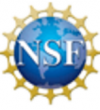User Tools
This is an old revision of the document!
Table of Contents
Home – Research – Members – Publication – Honor – Courses – Services – News – Openings
NSF/CNS-2148212: RINGS: Learning-Enabled Ground and Air Integrated Networks (GAINs)
Personnel
- PI in the Leading Institution: Lingjia Liu (ECE at VT)
- PI in the Collaborative Institution: Robert Calderbank (ECE/CS at Duke)
- PI in the Collaborative Institution: Yuejie Chi (ECE at CMU)
Abstract
The explosive growth of mobile data traffic is in part a response to the proliferation of mobile access services in recent years. However, not all mobile users are able to enjoy stable and reliable broadband connections due to limited network capacities and limited coverage areas. Therefore, in next generation (NextG) mobile broadband networks it is necessary to integrate terrestrial and non-terrestrial networks to democratize wireless access, by providing seamless wireless coverage and supporting heterogeneous service requirements. To meet this goal, this project will develop the fundamental research necessary to integrate and operate terrestrial and non-terrestrial networks, termed Ground and Air Integrated Networks (GAINs). The research project is highly interdisciplinary at the interface of machine learning and wireless networks, providing graduate and undergraduate students with the skills needed to thrive in either community, as well as to bridge them either in academia or in industry. Software and hardware testbeds will provide proof of concept demonstrations for academic, industry and government partners.
The overarching objective of this research program is to develop fundamental enabling communication and computing technologies for resilient and intelligent Ground and Air Integrated Networks (GAINs) based on waveform design, real-time machine learning, resource scheduling, distributed computing and learning. This research program makes the sparse representation of the propagation environment visible to machine learning algorithms by designing signals and controlling networks in the delay-Doppler domain, rather than the time-frequency domain. The research program is streamlined into four interconnected research thrusts: 1) Waveform design to enable machine learning; 2) multi-agent reinforcement learning-enabled resilient scheduling for terrestrial networks; 3) distributed and resilient computing in GAINs; and 4) proof-of-concept development and system evaluation. A new suite of distributed and resilient machine learning algorithms that are communication-efficient and heterogeneity-aware will be tailored to information processing in GAINs at the speed of the next generation (NextG) networks.
Research Breakdown
The following thrusts are organized to address the above mentioned research components:
- Thrust 1: Waveform Design to Enable Machine Learning —- Viewing Channels from the Delay-Doppler Domain
- Thrust 2: Multi-Agent Reinforcement Learning-Enabled Resilient Scheduling for TNs —- Reduced Scheduling Complexity with Inaccurate Input Information
- Thrust 3: Distributed and Resilient Computing in GAINs —- Focus on Heterogeneity and Decentralized Nature
Designing waveforms in a different domain (e.g., the delay-Doppler domain) creates a channel that only changes at the speed of the local propagation environment, enabling detection, estimation and learning at the speed of NextG, and migration of MIMO scheduling to the cloud. Reservoir computing-based real-time machine learning tools will be coupled with new waveform design to enable receive processing at the speed of NextG. Novel multi-agent reinforcement learning-based centralized scheduling strategies will be introduced to enable low-complexity and resilient resource allocation in the delay-Doppler domain. A new suite of distributed and resilient machine learning algorithms that are communication-efficient and heterogeneity-aware will be tailored to information processing in GAINs.

